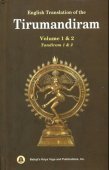Pancaksharamantra, Pañcākṣaramantra, Pancakshara-mantra: 1 definition
Introduction:
Pancaksharamantra means something in Hinduism, Sanskrit. If you want to know the exact meaning, history, etymology or English translation of this term then check out the descriptions on this page. Add your comment or reference to a book if you want to contribute to this summary article.
The Sanskrit term Pañcākṣaramantra can be transliterated into English as Pancaksaramantra or Pancaksharamantra, using the IAST transliteration scheme (?).
Alternative spellings of this word include Panchaksharamantra.
In Hinduism
Shaivism (Shaiva philosophy)
Source: Shodhganga: The saurapurana - a critical study (shaivism)Pañcākṣaramantra (पञ्चाक्षरमन्त्र) or Pañcākṣaramantra refers to the mantra known as “oṃ namaḥ śivāya” and is used in the worship of Śiva.—If a person offers a leaf or flower with the five-syllabled mantra once even to Lord Śiva gets eternal merits. It is stated that seven crores of mahāmantras came out of the mouth of Śiva but none is equal to pañcākṣaramantra. If a person Utters the pañcākṣaramantra becomes a follower of Śiva and gets release from the bondage of Saṃsāra.

Shaiva (शैव, śaiva) or Shaivism (śaivism) represents a tradition of Hinduism worshiping Shiva as the supreme being. Closely related to Shaktism, Shaiva literature includes a range of scriptures, including Tantras, while the root of this tradition may be traced back to the ancient Vedas.
See also (Relevant definitions)
Partial matches: Mantra, Pancakshara.
Ends with: Shivapancaksharamantra.
Full-text: Pancakshara, Bilvapatra, Kalavati, Kaka.
Relevant text
Search found 7 books and stories containing Pancaksharamantra, Pañcākṣaramantra, Pancakshara-mantra, Pañcākṣara-mantra, Pancaksaramantra, Pancaksara-mantra; (plurals include: Pancaksharamantras, Pañcākṣaramantras, mantras, Pancaksaramantras). You can also click to the full overview containing English textual excerpts. Below are direct links for the most relevant articles:
Shaiva Upanishads (A Critical Study) (by Arpita Chakraborty)
17. The esoteric significance of Five Faces of Lord Śiva < [Chapter 5 - Essence of Pañcabrahma Upaniṣad]
16. Rule relating to bathing in ashes (Bhasmasnāna) < [Chapter 2 - Greatness of Bhasma and Dhāraṇa]
The Religion and Philosophy of Tevaram (Thevaram) (by M. A. Dorai Rangaswamy)
Nayanar 14: Anaya < [Volume 4.1.1 - A comparative study of the Shaivite saints the Thiruthondathogai]
Puranic encyclopaedia (by Vettam Mani)
The Linga Purana (by J. L. Shastri)
Chapter 31 - Hymn to Śiva < [Section 1 - Uttarabhāga]
Chapter 27 - Worship of Liṅga (liṅgārcana) < [Section 1 - Uttarabhāga]
The Agni Purana (by N. Gangadharan)
Sivaprakasam (Study in Bondage and Liberation) (by N. Veerappan)
Means of release in Shaiva Siddhanta—Importance of Preceptor < [Chapter 6 - Means to Release]
Related products
